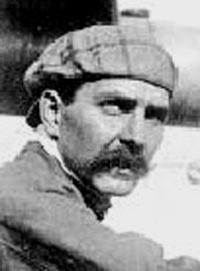
Louis Charles Bréguet (1880 - 1955)
Louis Charles Bréguet was a famous French aviator, airplane designer, and industrialist. Bréguet was born in Paris in 1880 and studied electrical engineering at the Lycée Condorcet, Lycée Carnot, and the E Cole Superieure d'Electricite. After finishing school he went to work at the electrical engineering firm of his father. By 1909 he built his first airplane and devoted the rest of his life to aviation.
Louis Charles Bréguet Louis Charles Bréguet, French Aviation Pioneer, Engineer and Industrialist, (b. January 2, 1880, Paris, France, d. May 5, 1955) developed an early interest in aviation technology. He developed a wind tunnel in 1905 which would measure and evaluate the effects of airflow on airfoils. Bréguet was pioneer aircraft designer who understood the need for pre-flight experimentation and testing. His first aircraft was a rugged biplane produced in 1909. This aircraft set speed records,and standards of quality accepted in the aviation industry. Bréguet was very successful during World War I. The company produced over 8000 Bréguet XIV reconnaissance aircraft for the Allied Forces. The Bréguet XIX made history in the postwar years as a long distance aircraft capable of flying across oceans and continents. In 1919, Louis Bréguet established a commercial air transportation company, Compagnie Des Messageries Avienne, now named Air France.
1910 - Bréguet Biplane The 1910 Bréguet biplane designed and built by Louis Bréguet and based on his aircraft featured at the 1909 Reims International Air Meet, found ready customers for its standard tail, tractor engine, and biplane wing configuration. This design was to remain the recognizable silhouette of aircraft for the next two decades
Louis C. Bréguet : Engineer-Industrialist and French Aviation Pioneer Louis Charles Bréguet was born into a family tradition of engineering science. He developed an early interest in the fledgling aeronautic technology and in 1905 developed a sophisticated wind tunnel in which he was able to measure and evaluate in depth the effects of airflow on airfoils. He was among the few pioneer aircraft designers who understood the vital need for pre-flight experimentation and testing, and the urgency of highest quality construction for safety. His first aircraft was produced in 1909, a rugged biplane of high quality and performance. It not only became notable for establishing speed records, but also set the standards of quality accepted throughout the aviation industry. In 1911, his interest in air transportation gave him the distinction of being the first to carry 12 people aloft in an aircraft. World War I assured the success of his company as they produced some 8000 of the famed Bréguet XIV reconnaissance aircraft for the Allied Forces, thereby contributing to victory and the emergence of air power. His more advanced Bréguet XIX made history in the postwar years for its ability to fly long distances across oceans and continents. In 1919, Louis Bréguet established a commercial air transportation company, Compagnie Des Messageries Avienne, which now spans the world under the name Air France, and under Bréguet's technical guidance the Societe de Avions maintained prominence in the French aviation industry in production of civil and military aircraft.
Louis Bréguet Louis Bréguet (21/1/1890 - 4/5/1955, France), contructeur et pionnier de l'aéronautique. En 1905 il travaillait déjà - avec son frère Jacques et Charles Richet - sur un projèt de gyroplane, dont la première ascension avec pilote eut lieu en 1907. Pendant la Grande Guerre, Louis Bréguet a notamment développé les premiers bombardiers français: le Bréguet-Michelin en 1915 et le Bréguet-14 en 1917 (moteur Renault 300 ch, 170 km/h, plafond 5.800 m, autonomie 3 h, 1.600 exemplaires construits). A partir de 1935, il retourna au développement du gyroplane. Il fut un des pionniers du développement de l'hélicoptère, avec le russe Sikorsky.
Louis Bréguet : Pionnier, ingénieur, pilote, chef d'industrie Son père Antoine Louis Bréguet, polytechnicien, spécialiste des moteurs électriques, dirigeait la Maison Bréguet, rue Didot , Paris(14). Il décéda très jeune, alors que Louis n'avait que deux ans. Reçu major de l'École Supérieure d'Electricité en 1900, ingénieur à l'usine de Douai de la Maison Bréguet, il s'intéresse très tôt aux machines volantes, encouragé et aidé par le Professeur Charles Richet, ami de son père, et par son frère Jacques, né en 1882, polytechnicien, ingénieur en chef de la Maison Bréguet. Il s'intéresse d'abord au "Gyroplane", patronyme spécifique suggéré par le Pr.Richet: Gyroplane n°ree;1 en 1907. Puis aux aéroplanes en 1909, qu'il apprend à piloter lui-même. Il obtient le Brevet de Pilote n°ree;52 de l'Aéro Club de France. La Société Anonyme des Ateliers d'Aviation Louis Bréguet est créée en 1911. Puis suite à l'intérêt de la Marine, il s'intéresse aux hydravions et gagne la grande Médaille d'Or du ministère de la Marine en 1913 à Monaco. En 1914, compte tenu du développement de la Société, il crée le site de Villacoublay: usine et école de pilotage. Au début de la guerre il est affecté, à sa demande, comme sergent-pilote à l'escadrille de défense aérienne du camp retranché de Paris. C'est sur le Bréguet de reconnaissance équipé d'un moteur de 160CV qu'il effectue, fin août 1914, la reconnaissance historique qui conduira à la victoire de la Marne. Puis ce sera la série des fameux Br 14 (5500 avions produits)....more
Chronologie de Bréguet : 1906 - 1918 1906/07 Atelier de Douai : Gyroplanes I et II 1908 - Société des Ateliers díAviation Bréguet-Richet : Avions Bréguet no.1,1bis, 2 1909 - 3 juillet, au meeting de DOUAI: présentation du premier avion Bréguet 1910 - Léon BATHIAT: premier Pilote díessai Bréguet (autre que Louis Bréguet) 1911 - Création de la Société Anonyme des Ateliers díAviation Louis Bréguet 1912 - Première réalisation díhydravions: HU1, 2 3 1913/14 - Création du site de Villacoublay 1916 - Premier vol du Br 14A2 : 21 novembre à Villacoublay, pilote Louis Bréguet, passager l'ingénieur Vullierme En 1918, il y aura plus de 2000 employés (série des Br14) Références:
Michelet, G., Bréguet, Edition France-Empire 1963
Gallery The Bréguet Gyroplanes 1, 1907 and 2, 1908
 Bréguet Gyroplane 1, 1907
Bréguet "Gyroplane" 1907 http://avia.russian.ee When it rose vertically from the ground with its pilot in the late summer of 1907, the Gyroplane No.1 built by Louis and Jacques Bréguet in association with Professor Charles Richet had to be steadied by a man stationed at the extremity of each of the four arms supporting the rotors.
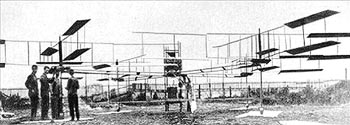 Bréguet-Richet Gyroplane 1, 1907
It cannot, therefore, take the credit for being the first helicopter to make a free flight, even though the ground helpers contributed nothing towards the lifting power of the rotors; but it was the first machine to raise itself, with a pilot, vertically off the ground by means of a rotating-wing system of lift.
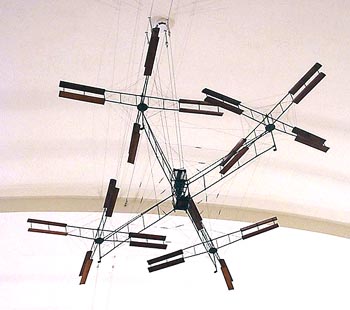 Bréguet-Richet Gyroplane 1, 1907 Frédéric Boulanger download a 750pixel image
Basically, the Bréguet machine consisted of a rectangular central chassis of steel tubing supporting the powerplant and the pilot; from each corner of this chassis there radiated an arm, also of steel tube construction, at the extremity of which was mounted a fabric-covered 4-blade biplane rotor, making a total of 32 small lifting surfaces. One pair of diagonally opposed rotors rotated in a clockwise direction, the other pair moving anti-clockwise.
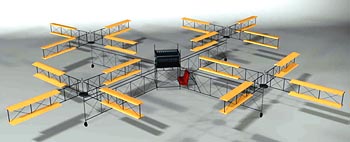 Bréguet-Richet Gyroplane 1, 1907 download a 1000pixel image
The pilot, M.Volumard, was reputedly chosen at least partly because of his small stature - he weighed only 68kg. Authorities differ over the date of the Bréguet machine's first flight at Douai, 24 August and 19 September 1907 being quoted with equal assurance; on this occasion the aircraft rose to about 0.60m. Take-off to some 1.50m was achieved during a test on 29 September, and similar heights were reached in several subsequent tests, but the Bréguet-Richet aircraft was neither controllable nor steerable in a horizontal plane.
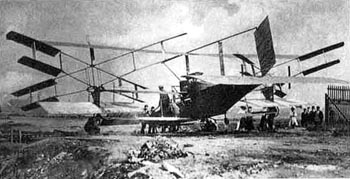 Bréguet-Richet Gyroplane 2, 1908
Opdyke, Leonard E., French Aeroplanes Before the Great War
In 1908 the Bréguet-Richet collaboration produced their Gyroplane No.2, powered by a 55hp Renault engine and having two forward-tilting 2-blade rotors with a diameter of 7.85m and, in addition, fixed wings giving an extra 50m2 of lifting surface. This machine made a number of successful flights in the summer of 1908, but was severely damaged in a 'heavy' landing on 19 September.
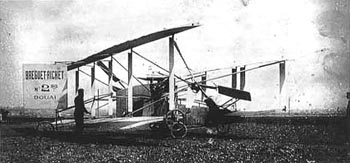 Bréguet-Richet 2bis, 1908
Opdyke, Leonard E., French Aeroplanes Before the Great War
In rebuilt form as the No.2bis it was displayed statically at Paris in December 1908 and made one test flight in the following April, but a month later the Bréguet premises were wrecked by a hurricane. This, and the shortage of contemporary engines with an adequate power/weight ratio, caused Bréguet to abandon rotary-winged development until the appearance of the Bréguet-Dorand design in the 1930s. Munson, Kenneth, Helicopters And Other Rotorcraft Since 1907, 1968 At last, after the turn of the century, a new lightweight power plant became available. Fitted to the early automobiles and box-kite airplanes, the gasoline engine began to prove itself. In 1907, four years after the Wright brothers had flown the first controllable airplane, French designer Louis Bréguet built a primitive helicopter that could lift a man into the air....more
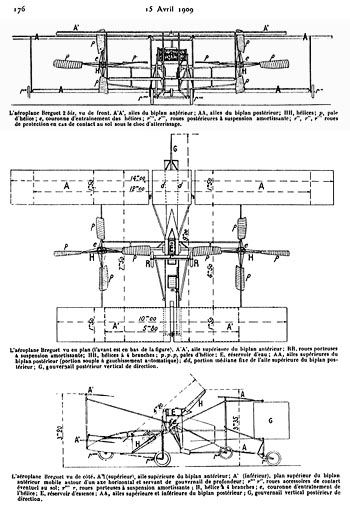 Bréguet-Richet 2bis, 1908 download a 1000pixel image
Charles Robert Richet (1850-1935) Fils du docteur Alfred Richet (1816-1891). Docteur en médecine (1877), professeur de physiologie à la faculté de m édecine de Paris (1887-1927), nommé en 1878 rédacteur en chef puis en 1881 directeur de la Revue Scientifique, connu pour ses travaux sur les allergies et l'origine de crétinisme, éditeur du Journal de Physiologie (1917-1929), prix Nobel de médecine en 1913 pour ses recherches sur les 'anaphylaxies. Elève de Jules- Etienne Marey (1830-1904), inventeur de la chronophotographie dont les instruments utilisés pour ses expériences étaient fabriqués chez Breguet, Richet collabore avec Victor Tatin (1843-1913) à la réalisation de machines volantes, dès 1890. Richet fait voler en 1896 à Carqueiranne (Var) un aéroplane à vapeur.
Bréguet-Richet 3, 1909
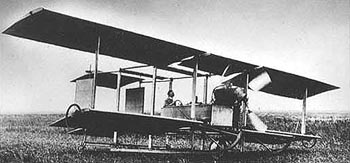 Bréguet-Richet 3, 1909
Opdyke, Leonard E., French Aeroplanes Before the Great War.
Bréguet-Richet 3 renamed Bréguet 1, 1909
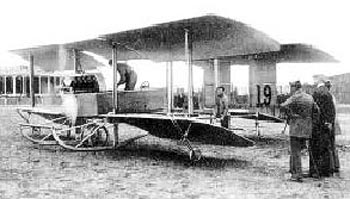 Bréguet 1, Reims, 1909
Bréguet 1 (1909) 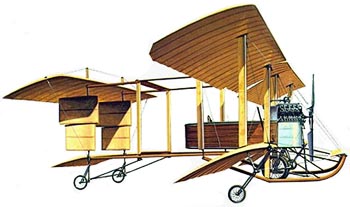 Bréguet 1, 1909
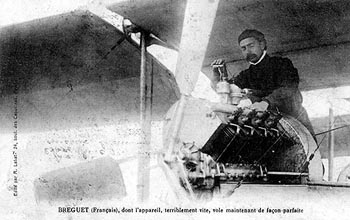 LC Bréguet, Bréguet 1, possibly at Rheims, 1909 Download a 1000pixel image
Bréguet 2 (sometimes called 4), 1909
 Bréguet 2, (4) 1909
Opdyke, Leonard E., French Aeroplanes Before the Great War.
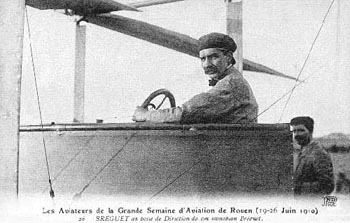 LC Bréguet, Bréguet 2, (4) Rebuilt for Rouen Meeting, June, 1910 http://members.shaw.ca/flyingaces/archive1.htm
Bréguet 3, 1910
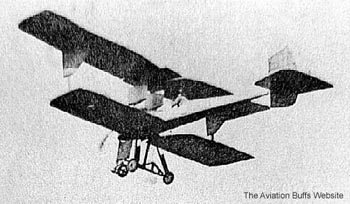 Bréguet 3, 1910 The Aviation Buffs Website
Bréguet 3, 1910 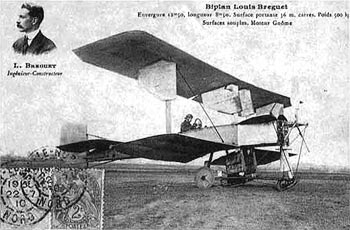 Bréguet 3, 1910
Opdyke, Leonard E., French Aeroplanes Before the Great War.
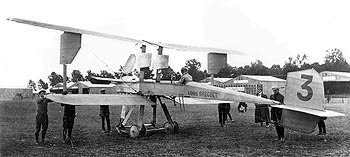 Bréguet 3, 1910 Download a 1000pixel image
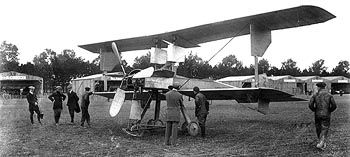 Bréguet 3, 1910 Download a 1000pixel image
Bréguet 3, U Series, 1912
 Bréguet U1, 1912 Photo : Lars Hendricksson ©http://avro.sys.nu download a 750pixel image
The Bréguet 3 was elected as the best biplane at "Concours Militaire" in Reims, France 1911. The type was provided to several armed forces before the outbreak of WWI, including one aircraft that was purchased by the new Swedish Army Aviation 1912 for evaluation. The aircraft was of the variation U1, which means that it was fitted with a Canton-Unné engine (type Salmson). The engine was of a 85 hp water-cooled radial, non-rotating design. Bréguet 3, 1911 Bréguet U3, 1912 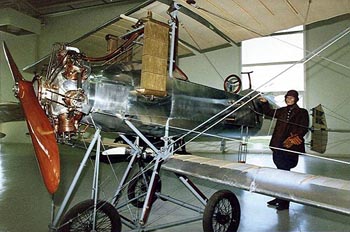 Bréguet U1, 1912 download a 750pixel image
 Bréguet U1, 85hp. 7cyl. Canton-Unné, 1912 Frédéric Boulanger download a 1000pixel image
 Bréguet U1, 85hp. 7cyl. Canton-Unné, 1912 download a 1000pixel image
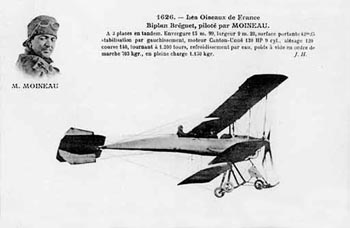 Bréguet de René Moineau, U2 120hp. 9cyl. Canton-Unné, 1912
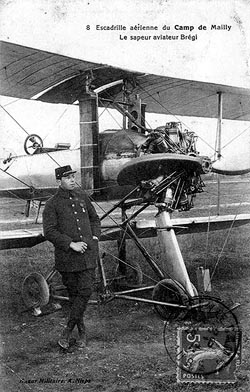 Bréguet U2, 1912 download a 500pixel image
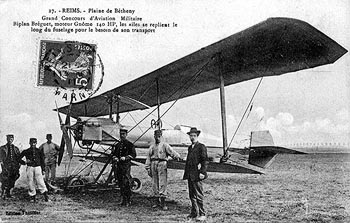 Bréguet G4, 140hp. Gnome, 1912 download a 1000pixel image
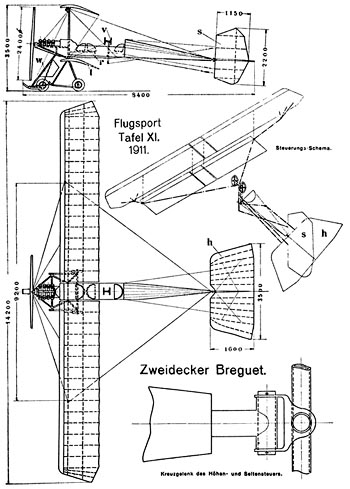 Bréguet G4, 140hp. Gnome, 1912 download a 1000pixel image
 Bréguet U2, 1912
Opdyke, Leonard E., French Aeroplanes Before the Great War.
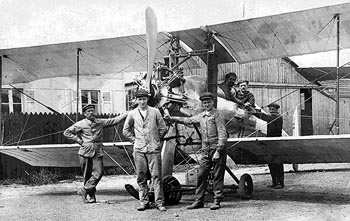 'Another day at the Bréguet factory' download a 750pixel or 1500pixel image
Gordon Bennett Racer, 1912
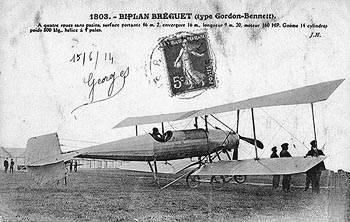 Gordon Bennett Racer, 160hp. Gnome, 1912 download a 1000pixel image
Bréguet Hydravion H-U2, 1912 and H-U3, 1913
 Bréguet Hydravion H-U3, Monaco, April, 1913 download a 1000pixel image
Bréguet H-U2, 1912 Bréguet H-U3, 1913 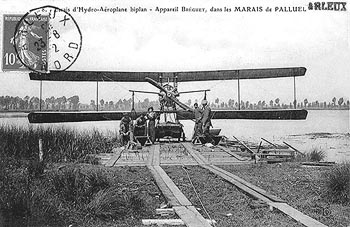 Bréguet Hydravion H-U2, 1912 or H-U3, 1913 download a 1000pixel image
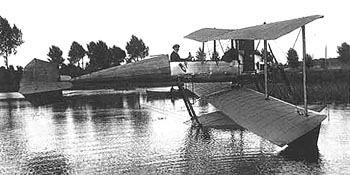 Bréguet Hydravion H-U2, 1912 or H-U3, 1913
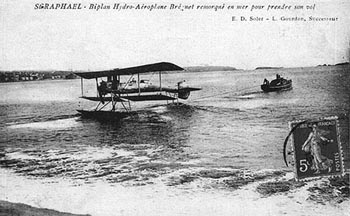 Bréguet Hydravion H-U2, 1912 or H-U3, 1913
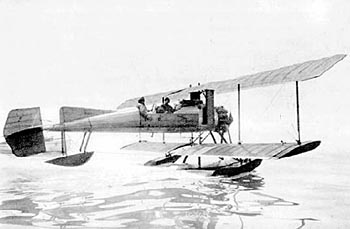 Bréguet Hydravion, H-U3, Monaco, 1913 download a 1000pixel image
 Bréguet Hydravion G4, 147 download a 1000pixel image
Bréguet AG.4, 1914
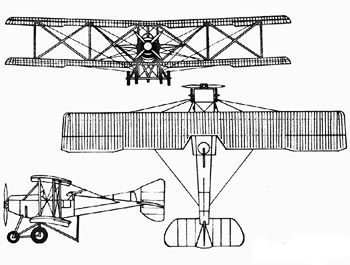
Bréguet AU.3, 1914
Bréguet AU.3, Tractor, 200hp. Canton-Unné, 1914
Opdyke, Leonard E., French Aeroplanes Before the Great War.
Bréguet BU.3, 1914
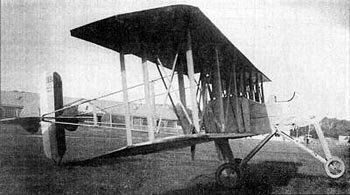 Bréguet BU.3, Pusher, 200hp. Canton-Unné, 1914
Believe this to be machine mentioned but not pictured in Opdyke, Leonard E., French Aeroplanes Before the Great War. Schiffer Military History, Atglen, Pa., 1999, p.76 Bréguet-Michelin B2, 1916
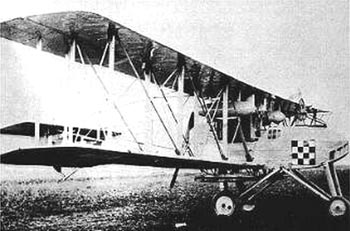 Bréguet-Michelin B2, 1916
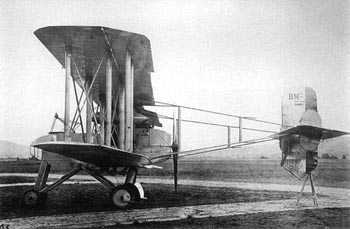 Bréguet-Michelin B2, 1916 download a 750pixel image
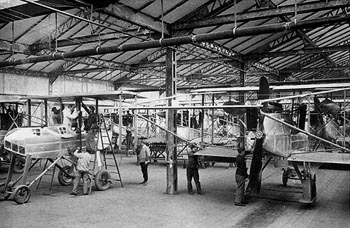 Bréguet-Michelin B2, 1916 download a 750pixel image
Bréguet 5, 1915; 5 Chasseur d'escorte, 1916
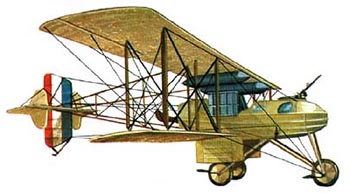 Bréguet 5, 1915 download a 750 image
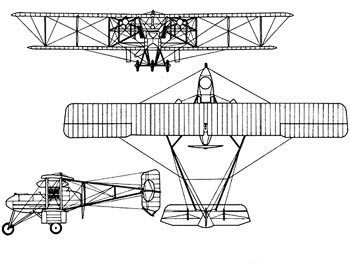 Bréguet 5, 1915
Bréguet 5 chasseur d'escorte, 1915-16 Bréguet 11 "Corsaire", 1916 Bréguet SN, 1916
 Bréguet SN, Camp Retranché de Paris, 1916 download a 1000pixel image
Bréguet 14, 1917
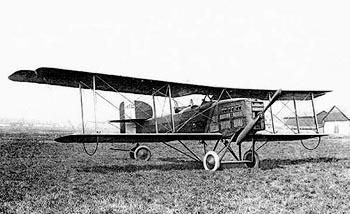 Bréguet 14A2, 1917
Bréguet Br.14, (A2, Reconnaissance; B2, Bomber) http://www.wwiaviation.com/bombers_allies.shtml Used throughout the war, the innovative Breguet Br.14 was a highly successful biplane used by the French, Belgian and American air services. Designed by Louis Breguet in 1916, it was one of the first aircraft constructed with duralumin in the airframe. Rugged and versatile, it was mass produced in several variations, including a seaplane model. Before the end of the war, the Br.14 saw service as a reconnaissance aircraft, a day/night bomber and an air ambulance. This was one of the best bombers the French used. It was produced up until 1926.
Bréguet 14 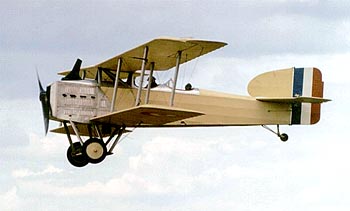 Bréguet 14A1, 1917
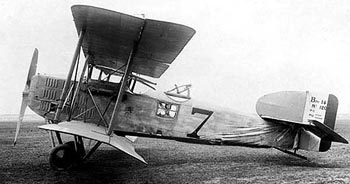 Bréguet 14B2, 1917
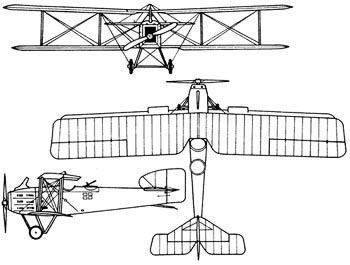 Bréguet 14B2, 1917
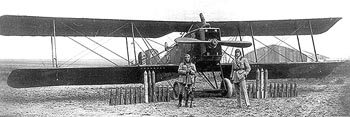 Bréguet 14B2, 1917 http://www.pilots-n-planes-ww1.com
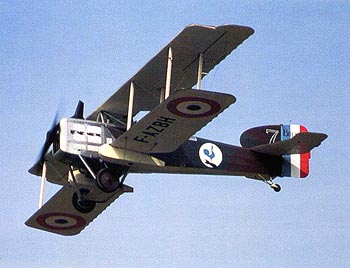 Bréguet 14, 1917
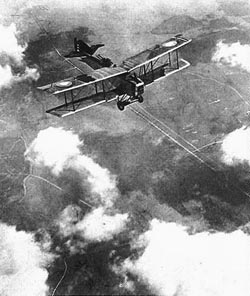 Bréguet 14, 1917 download a 500pixel image
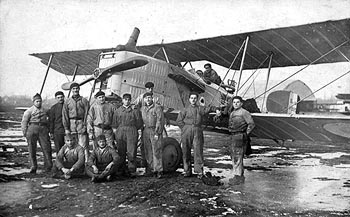 Bréguet 14 and groundcrew, c.1917 download a 1000pixel image
Bréguet 17, 1918
 Bréguet 17, 1918
|
© Copyright 1999-2002 CTIE - All Rights Reserved - Caution |
